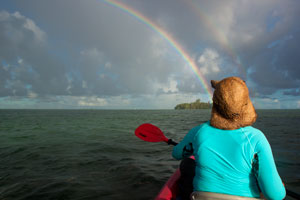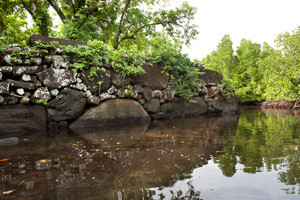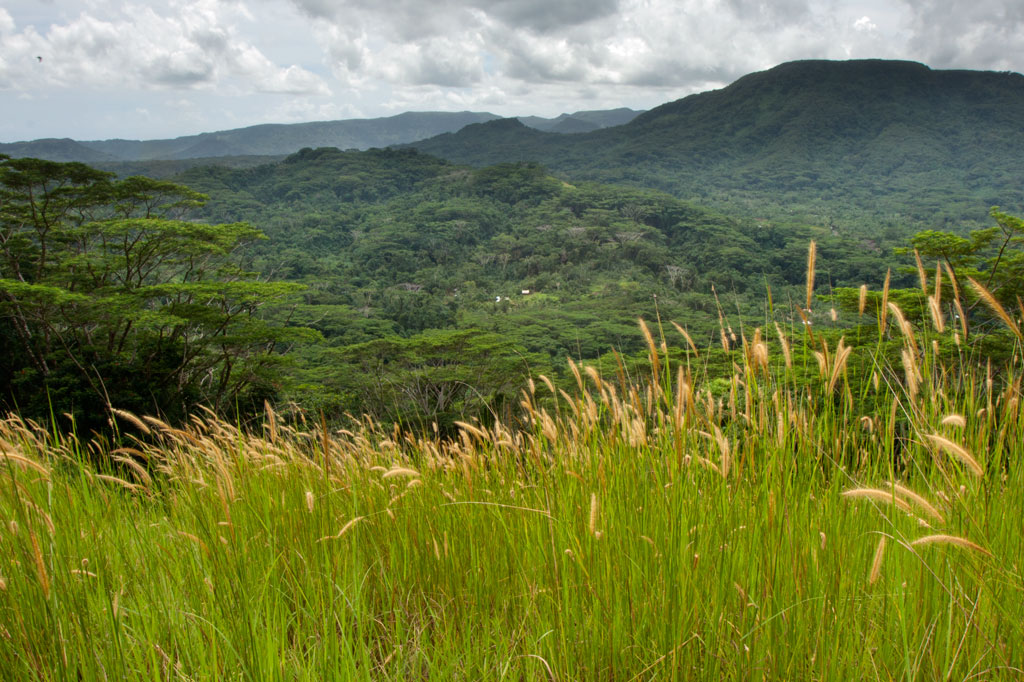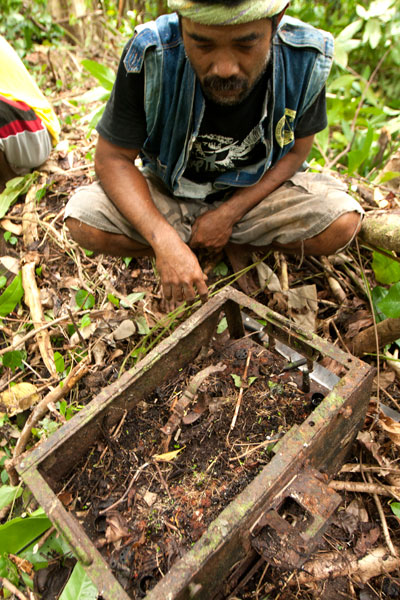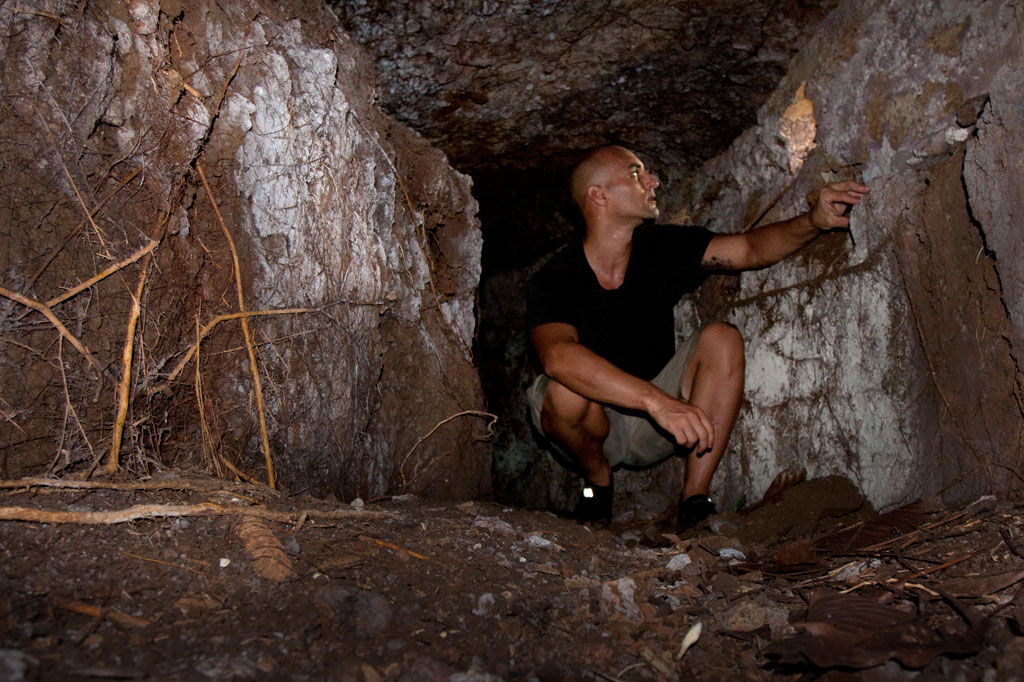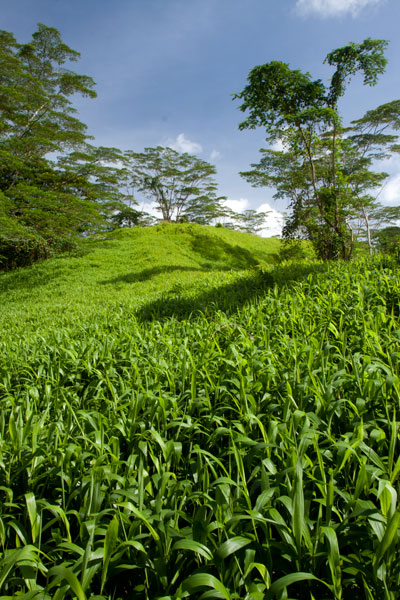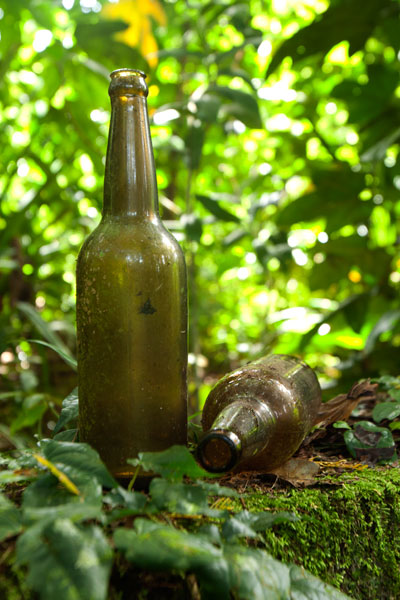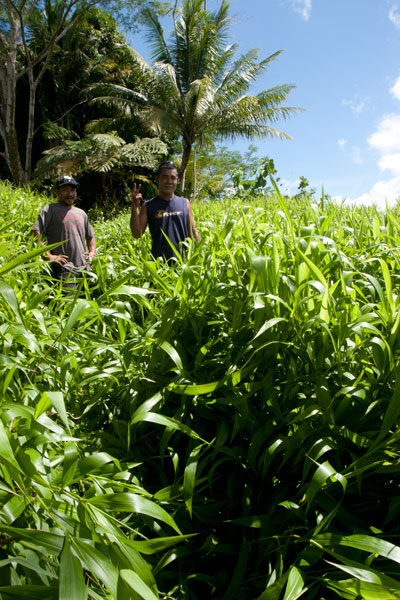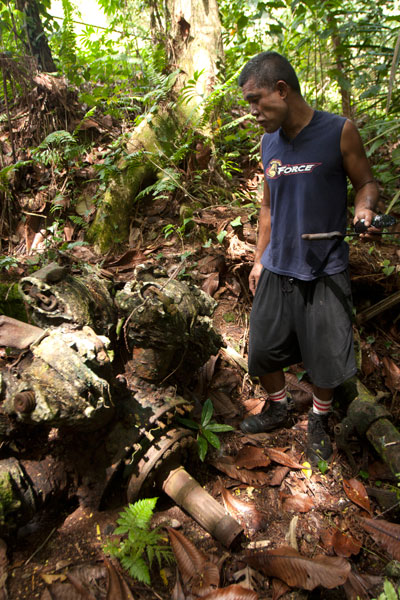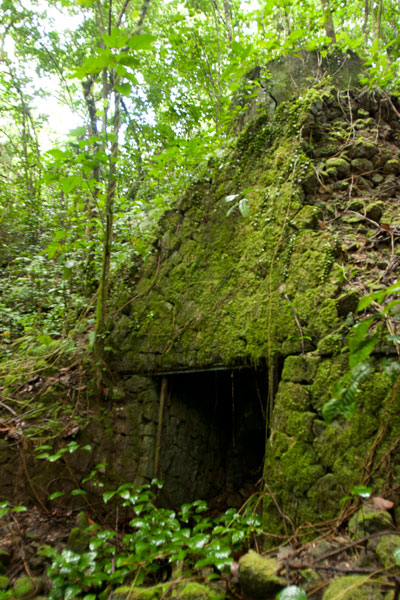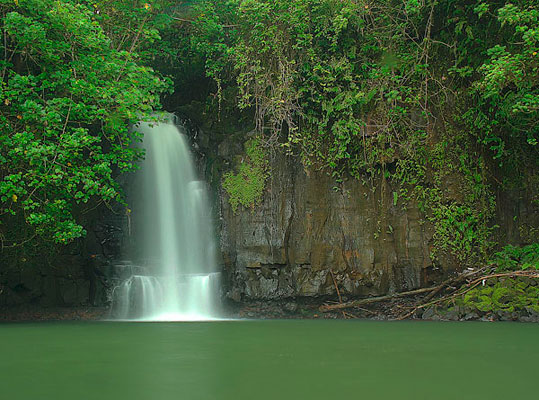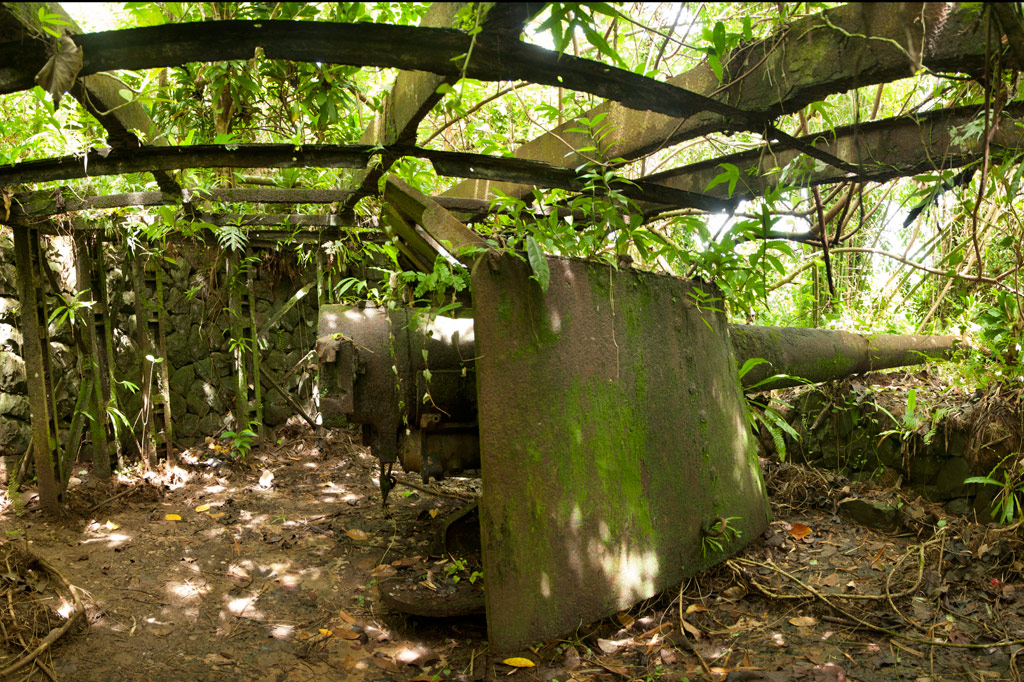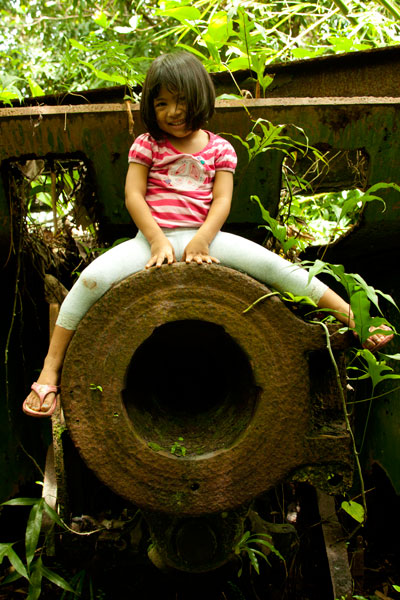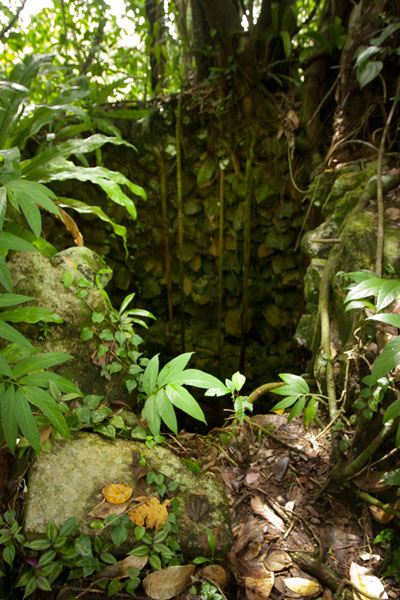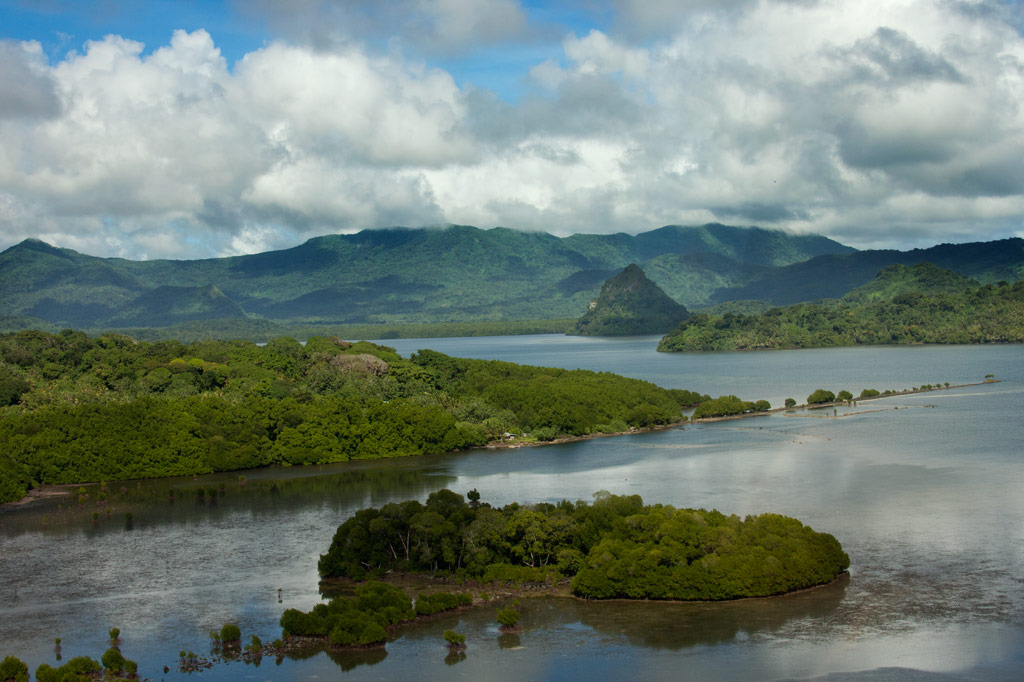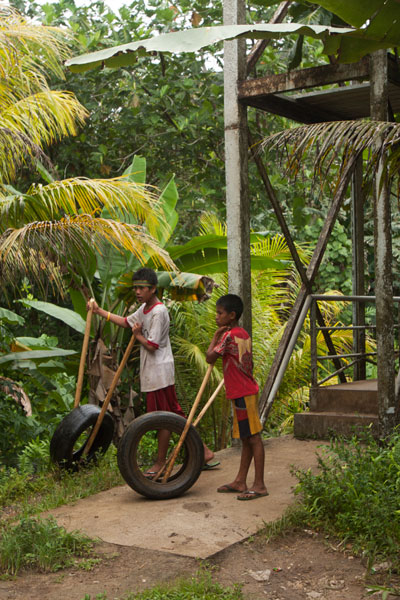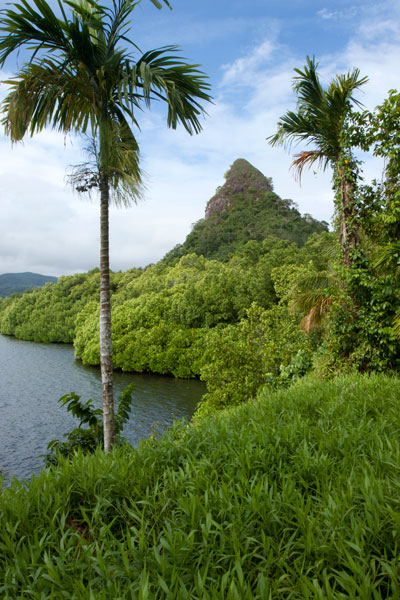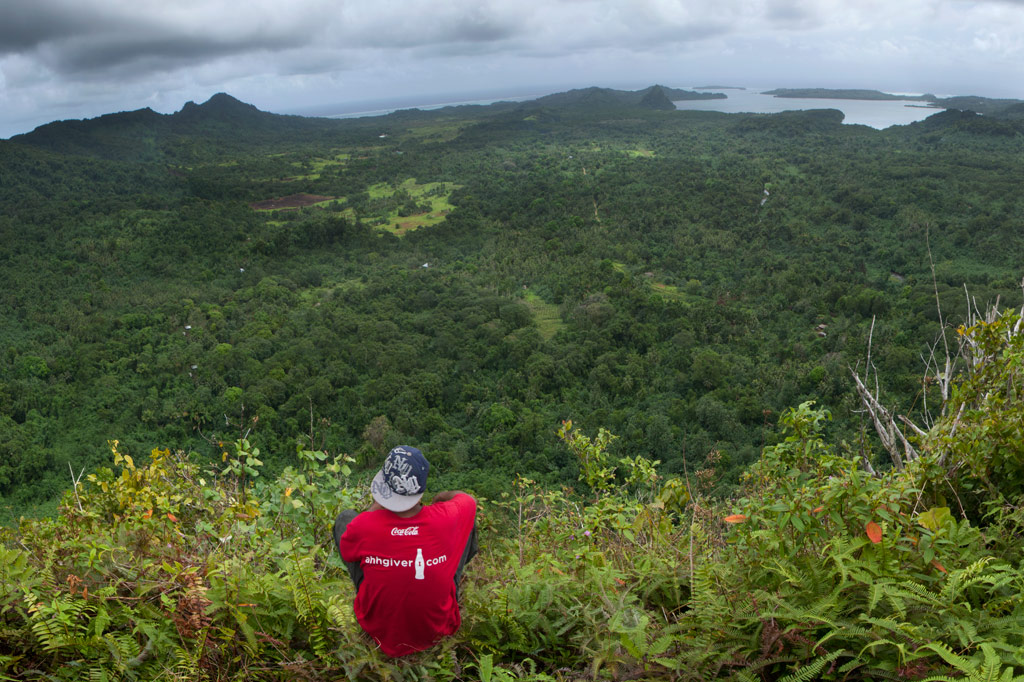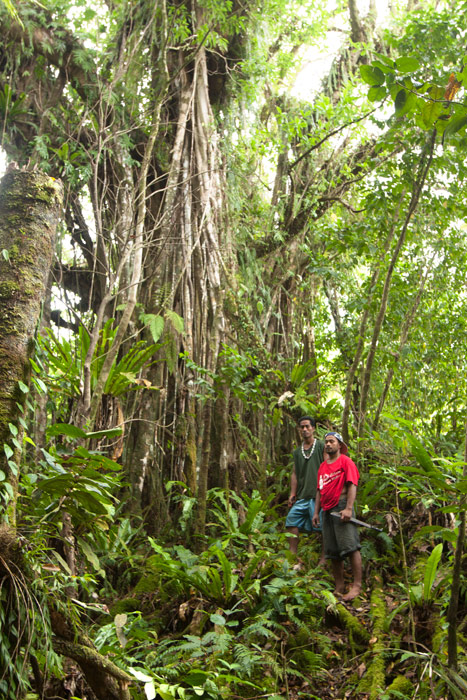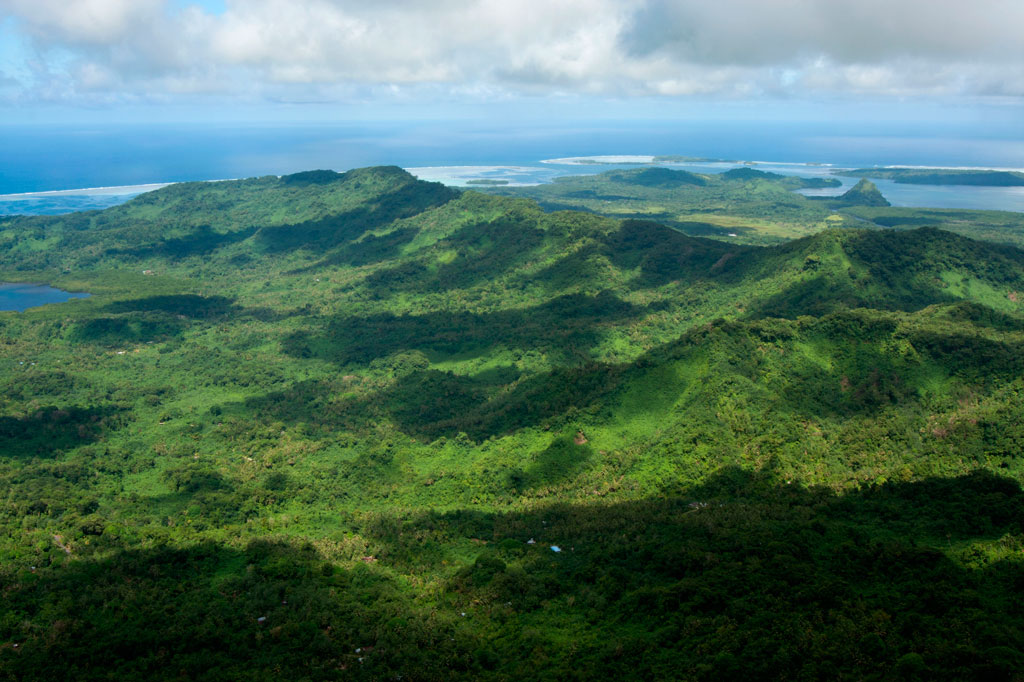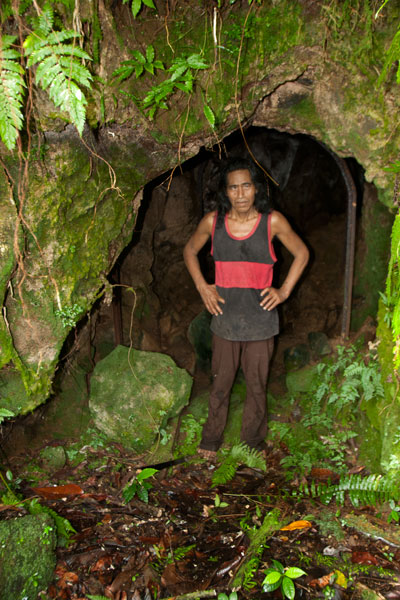As the closest lagoon islands to Kolonia and with the highest concentration of WWII historical sites anywhere around Pohnpei, Lenger and nearby Sapwtik make fantastic destinations for paddling enthusiasts. In addition to the attractions on each of the two islands, there are mangrove forests and some interesting reef environments to explore.
Around Lenger
Pahnaiau Getaway (Barbosa’s Wharf) to the Seaplane Ramp
This portion of the route is characterized by Lenger’s shallow fringe reef, a sandy, silty expanse dominated by small-scale coral growth, brilliant blue starfish, cowries, sea cucumbers of various types, and scattered beds of seagrass, which Pohnpeian’s call oaloahd. Keep an eye out for the main attraction: stingrays. They generally rest on the bottom in the sand and will shoot off when you approach. Not far beyond the wharf is the Jaluit Cistern, one of the oldest historical sites in Pohnpei State. The cistern was probably constructed in the late 1880s by German traders operating on the coast. A stone wharf originally connected it with the coast, but a few scattered stones are all that are left. Bullet holes in the masonry were caused by Allied strafing during WWII.
If you decide to make a wider arc around the island, you’ll pass over areas where the reef shelf ends and the deep part of the lagoon begins. Small sea turtles are seen on rare occasions near the reef wall. The majority of the reef fish will also be found at this natural boundary. Note, however, that the reef stretches all the way to Sapwtik in the northwest and there is no way around Lenger’s northern end without crossing it. The depth over the shelf varies from a few centimeters to a meter, depending on the time of day and the precise location. Because fragile corals and other organisms are harmed by feet or dragging keels, the northern passage should be attempted at high tide only.
The Seaplane Ramp to the Mangrove Passage
The reef on the eastern side of the island tends to be deeper than in the northwest and has denser beds of seagrass. Larger fish are found in this area, and sometimes juvenile black-tip reef sharks can be seen swishing their way around.
The Mangrove Passage to Barbosa’s Wharf
The tunnel-like mangrove passage winds about a third of a kilometer through a dense section of forest that mostly comprises members of the Rhizophora genus, identified by the arching prop roots that extend out of the water toward the tree trunks. It’s a nice, scenic paddle and a good place to spot shorebirds like the Pacific Reef Heron and Micronesian Kingfisher. Once out of the forest, you can follow the coastline past the ruins of the Japanese-era Kohatsu Wharf and back to Barbosa’s Wharf.
Around Sapwtik
A relatively well-preserved Japanese wharf extends southwest from Sapwtik’s coast all the way to the edge of the reef. This is a wonderful place for a picnic and swim or snorkel. There’s one large tree on the wharf, offering shade. To the west is a maze of mangrove clumps that are fun to paddle through (though they are not as extensive as Lenger’s) before reaching the western terminus of the island. North of the point is an exposed rocky place that’s a perfect pull-out spot for a snack. A little beyond that is the site of the coastal battery and nearby munitions magazine. Conditions north of Sapwtik’s coastline are very similar to Lenger’s northern sector — shallow and characterized by seagrass beds and silt. You shouldn’t try to kayak here except at mid to high tides. All along the coast, you’ll find evidence of Japanese occupation, low walls, foxholes, rifle pits, etc.
| Starting | Ending | Distance (km) | Distance (mi) | |
| St. Peter’s Church, Sokehs | —- | Pahnaiau Getaway, Lenger | 7.93 km | 4.93 mi |
| Misko Beach, Dekehtik Island | —- | Pahnaiau Getaway, Lenger | 4.52 km | 2.8 mi |
| Ice Dock, Kolonia Town | —- | Pahnaiau Getaway, Lenger | 3.53 km | 2.2 mi |
| Nett Point, Nett | —- | Pahnaiau Getaway, Lenger | 1.97 km | 1.22 mi |
| St. Peter’s Church, Sokehs | —- | Japanese Wharf, Sapwtik | 7.75 km | 4.81 mi |
| Misko Beach, Dekehtik Island | —- | Japanese Wharf, Sapwtik | 4.34 km | 2.7 mi |
| Ice Dock, Kolonia Town | —- | Japanese Wharf, Sapwtik | 4.23 km | 2.63 mi |
| Nett Point, Nett | —- | Japanese Wharf, Sapwtik | 2.95 km | 1.83 mi |
| Pahnaiau Getaway, Lenger | —- | Japanese Seaplane Ramp, Lenger* | 1.52 km | 0.95 mi |
| Japanese Seaplane Ramp, Lenger | —- | Mangrove Passage Northern Entrance, Lenger | 0.58 km | 0.36 mi |
| Mangrove Passage Northern Entrance, Lenger | —- | Kohatsu Wharf, Lenger | 0.42 km | 0.26 mi |
| Kohatsu Wharf, Lenger | —- | Pahnaiau Getaway, Lenger | 0.51 km | 0.32 mi |
| Pahnaiau Getaway, Lenger | —- | Japanese Wharf, Sapwtik | 1.29 km | 0.8 mi |
| Japanese Wharf, Sapwtik | —- | Gun Battery, Sapwtik | 0.74 km | 0.46 mi |
*Shallow reef shelf. This segment is only passable at middle to high tides.


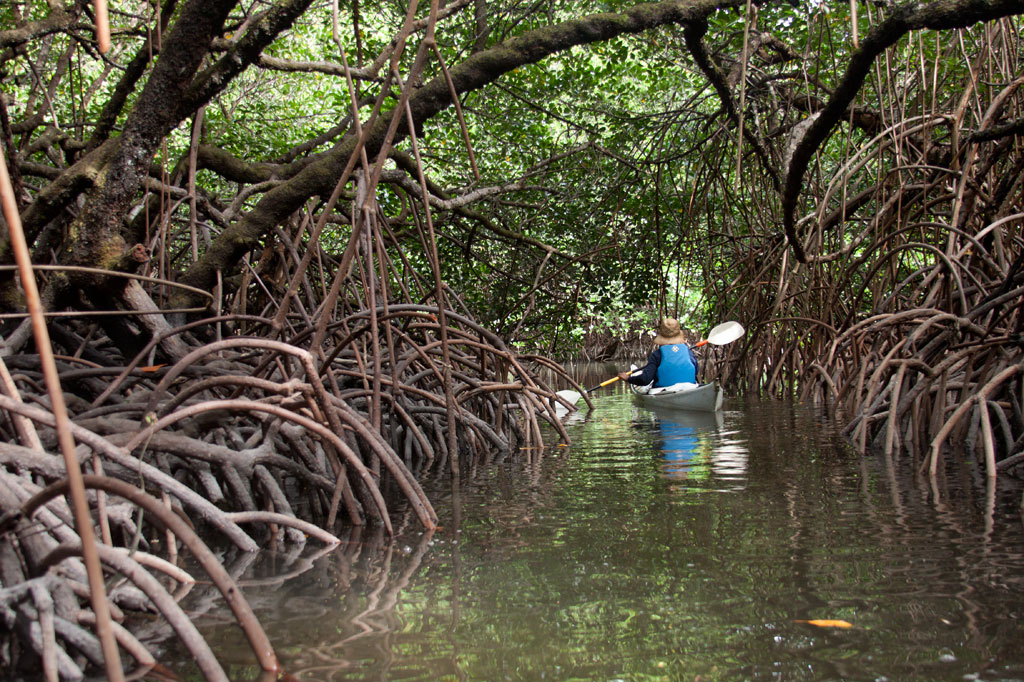
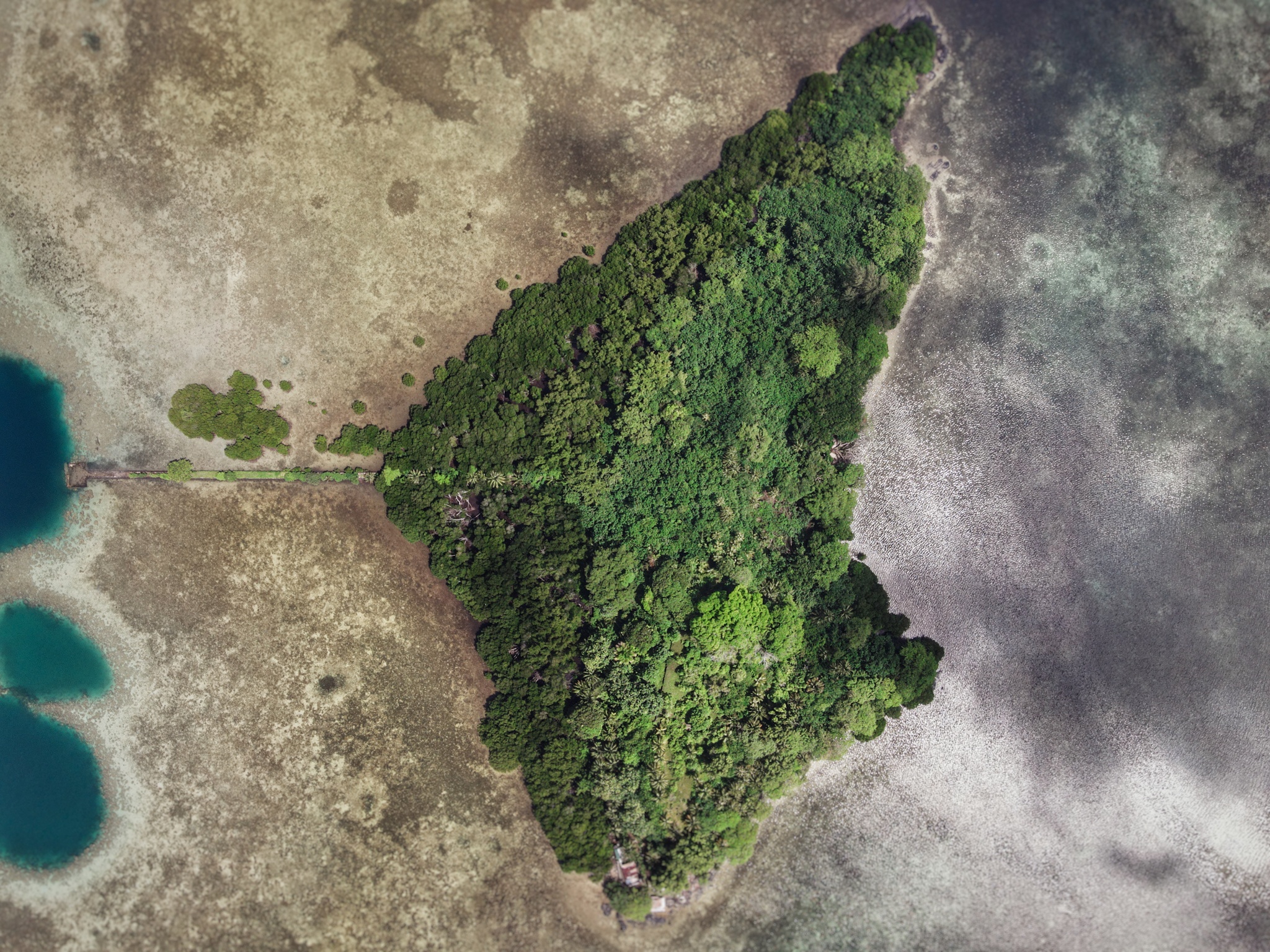
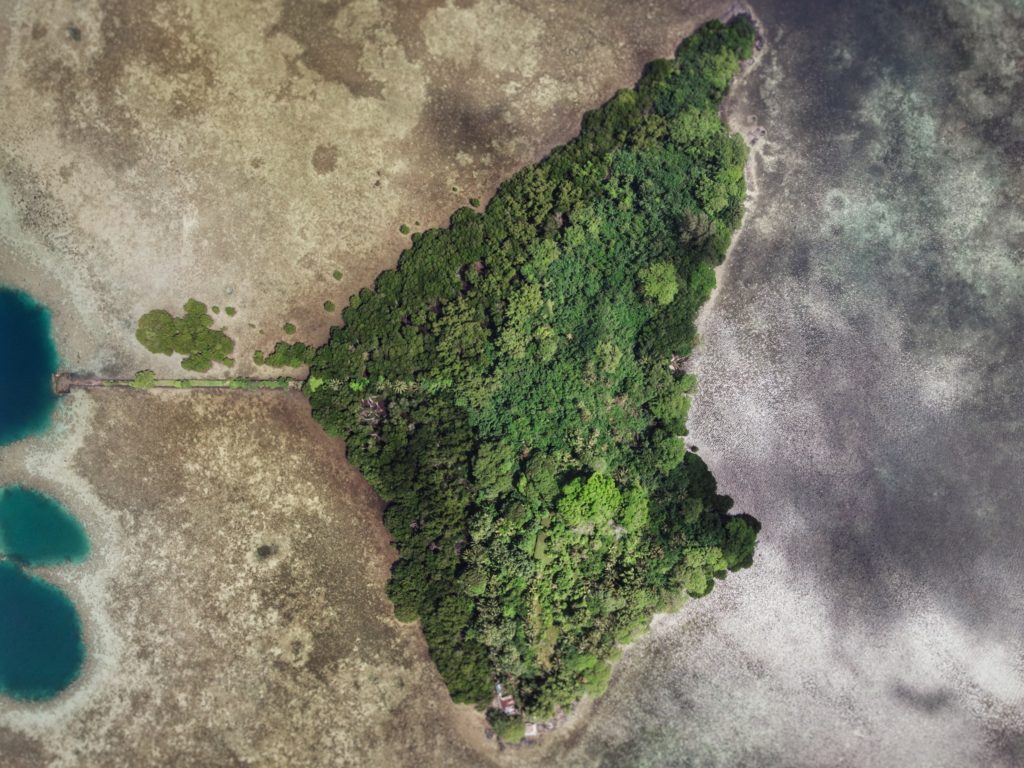
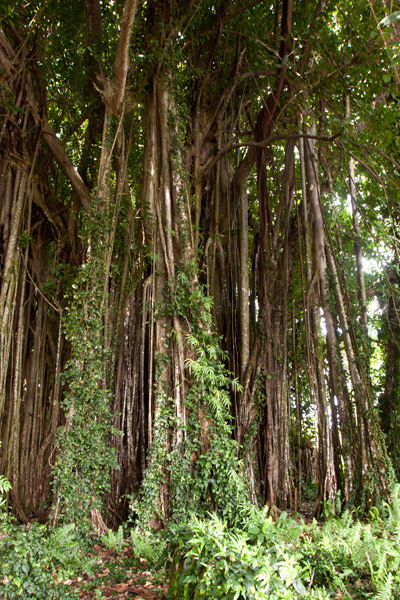
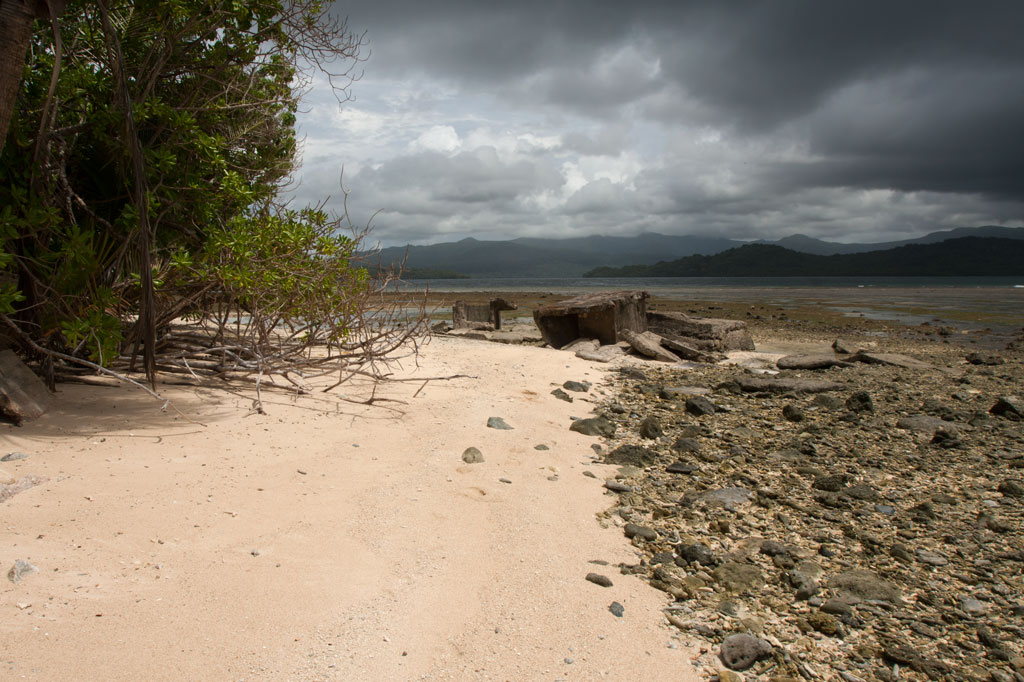
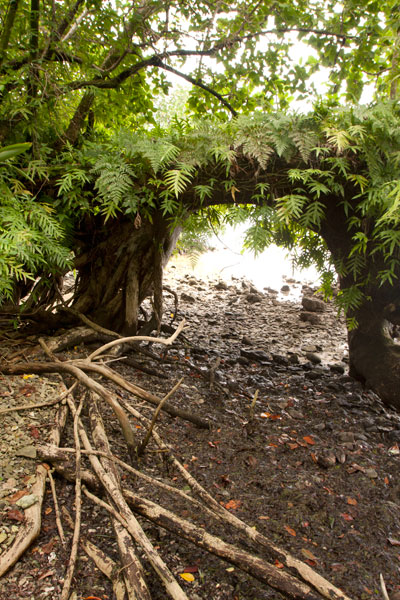
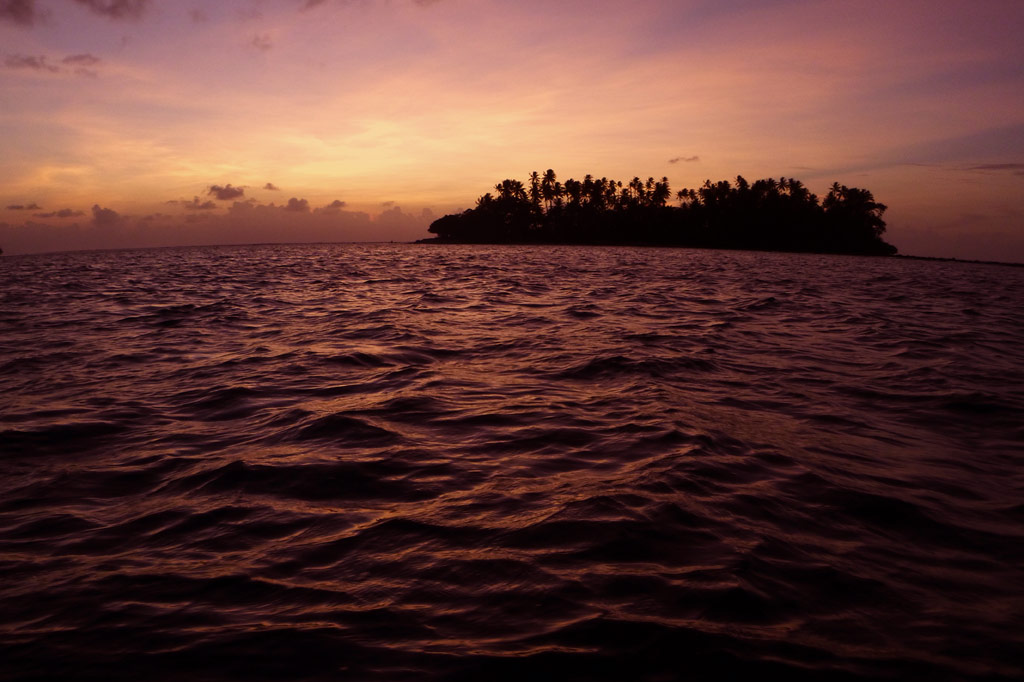
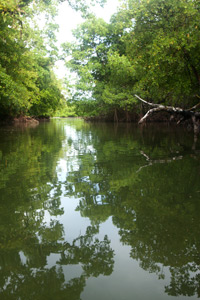
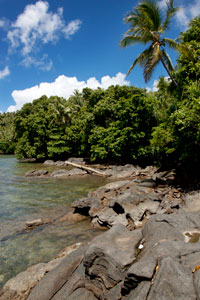 Further on, stony Salong Point juts north almost to the edge of the channel. Unusual eroded rock formations and a complete lack of mangroves make the place visually unique and worth a look. There’s also a small sea-cave and a portal in the topography that frames conical Takaiuh. Depending on tides and recent rain, the sheltered bay east of the point is sometimes a nice place for a dip, though there isn’t enough coral in the area for snorkeling.
Further on, stony Salong Point juts north almost to the edge of the channel. Unusual eroded rock formations and a complete lack of mangroves make the place visually unique and worth a look. There’s also a small sea-cave and a portal in the topography that frames conical Takaiuh. Depending on tides and recent rain, the sheltered bay east of the point is sometimes a nice place for a dip, though there isn’t enough coral in the area for snorkeling.